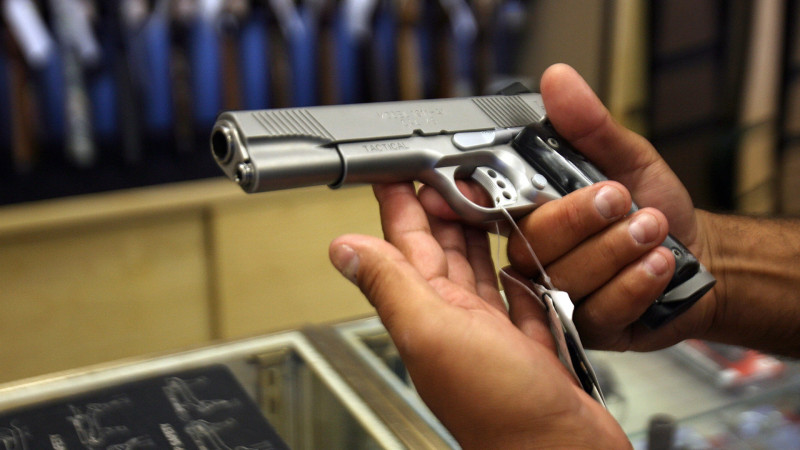The U.S. Supreme Court has rejected a challenge to a San Francisco law that requires handgun owners to secure their weapons with trigger locks or store them in gun safes while in the home.
The court majority declined to hear an appeal, led by the National Rifle Association, of lower court rulings that found the 2007 law does not seriously affect gun owners' ability to defend themselves.
In two landmark cases in the last decade, the high court had struck down local ordinances (in Washington, D.C. and Chicago) that sought to severely limit or ban the availability of operable handguns in the home. In those cases, the court declared that self-defense was "the central component" of the Second Amendment right to keep and bear arms.
The majority's position announced Monday drew a dissent (embedded below) from Associate Justice Clarence Thomas, joined by fellow conservative Antonin Scalia. Thomas pointed to the accounts of several of the half-dozen San Francisco residents who challenged the ordinance as proof it interferes with the basic right of self-defense:
One petitioner, an elderly woman who lives alone, explained that she is currently forced to store her handgun in a lock box and that if an intruder broke into her home at night, she would need to “turn on the light, find [her] glasses, find the key to the lockbox, insert the key in the lock and unlock the box (under the stress of the emergency), and then get [her] gun before being in position to defend [herself].” ... As she is over 79 years old, that would “not [be] an easy task.” Another petitioner stated that she is forced to store her gun in a code-operated safe and, in the event of an emergency, would need to get to that safe, remember her code under stress, and correctly enter it before she could retrieve her gun and be in a position to defend herself. If she erroneously entered the number due to stress, the safe would impose a delay before she could try again. A third petitioner explained that he would face the same challenge and, in the event the battery drains on his battery-operated safe, would need to locate a backup key to access his handgun.
Thomas' conclusion:
The law ... burdens their right to self-defense at the times they are most vulnerable — when they are sleeping, bathing, changing clothes, or otherwise indisposed. ... In an emergency situation, the delay imposed by this law could prevent San Francisco residents from using their handguns for the lawful purpose of self-defense. And that delay could easily be the difference between life and death.
Long-time Supreme Court reporter Lyle Denniston, writing for SCOTUSBlog, offers some context for the court's action:
The refusal to review the case of Jackson v. City and County of San Francisco was the latest in a string of such orders, declining to clarify the personal right to have a gun, first established seven years ago and extended nationwide five years ago, but not explained further in the years since. Once again, as is its custom, the Court did not explain why it was choosing to remain on the sidelines.
In the 2008 decision in District of Columbia v. Heller, the Court had ruled that the right created by the Second Amendment included a right to have a gun for one’s own use in self-defense, at least within the home, and with such a weapon in a condition allowing it to be quickly used. That is the right that the Court said applied all across the country, in the 2010 decision in McDonald v. City of Chicago. But McDonald marked the last time the Court had spoken on the amendment’ s reach.
Much of the uncertainty that has spread to courts across the country has involved the core question whether the personal right extends anywhere beyond the home. That has been the issue that the Justices have most often declined to sort out. The San Francisco case, however, sought to bring the Court back inside the home, to determine how far government could go to regulate access to a weapon there.
